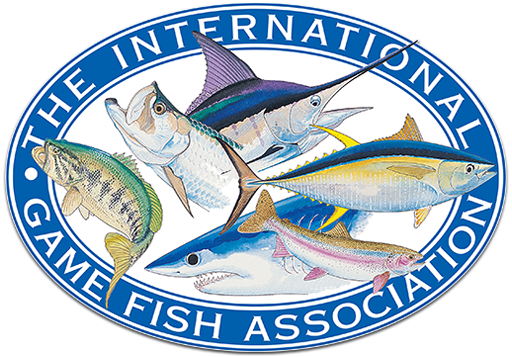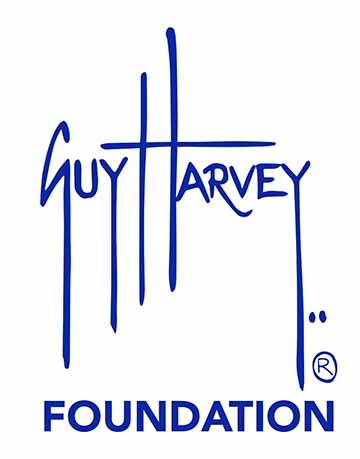IGFA Roosterfish Research Program
Did You Know?
- Roosterfish are one of the most important inshore species along the Pacific coasts of Mexico and Central America and recreational fishing for roosterfish contributes significantly to local economies throughout their range
- Commercial artisanal and subsistence fisheries for roosterfish exist across their range, but the impact on their stocks is unknown
- The scientific community knows almost nothing about roosterfish movements or the connectivity of their populations
- Common fisheries statistics used to estimate population health are not available for roosterfish, which can lead to an inability to properly manage their stocks
- Because of these uncertainties, the IGFA established the Roosterfish Research Program in 2022 and completed an initial investigation into roosterfish population connectivity in January of 2025
Questions Answered by the IGFA Roosterfish Research Program (First Phase)
- Using molecular genetic techniques, distinct sub-populations of roosterfish were identified among fish collected from different locations, including Baja California Sur, Guatemala, Puerto Jimenez, Costa Rica, and Coiba Island, Panama
- Genetic analyses of microsatellite markers identified genetic differences between Roosterfish samples from Baja California Sur and Central America, as well as samples from Panama, being differentiated from the rest of the Central American locations
- Additional results include the lack of observed genetic variation when analyzing microsatellite markers, which suggests roosterfish populations suffered a dramatic decline in the past that eroded large amounts of genetic variation
- Genetic analyses of single-nucleotide polymorphism (SNP) markers identified that samples from Baja California were differentiated from Guatemala and Puerto Jimenez, Costa Rica, and genetic differences were found between Guatemala and Puerto Jimenez, Costa Rica
The findings of distinct sub-populations of roosterfish suggest low levels of gene flow among the sampling locations and that each sub-population is potentially self-sustaining. These findings may lead to the development of regional management units for roosterfish to preserve genetic diversity and avoid localized depletion of these ecologically important and sought-after fish.
Please see below for more info on how the IGFA’s Roosterfish Research Program got its start:
Conception
In late 2021, the IGFA was approached by Tom Olivo, an avid angler and conservationist, who sought to learn more about the local population of roosterfish in his area off the Osa Peninsula in Costa Rica. Based on those first discussions with Tom, the IGFA did a deep dive into the available biological and ecological data for roosterfish, identifying a lack of information on this recreationally important species.
After a full literature review and numerous conversations, the IGFA contacted the foremost roosterfish scientist, Dr. Sofía Ortega Garcia at CICIMAR-IPN in Mexico, who had already been working on the science needed to understand roosterfish better, in collaboration with Dr. Jaime Alvarado-Bremer of Texas A&M University. The most pressing questions that needed to be answered involved the population structure of roosterfish, whether the population was made up of one large stock or multiple subpopulations. The answer to this critical question has significant management impacts given the species had never been formally assessed or managed anywhere along its range from Baja California, Mexico, to Peru.
Throughout our conversations with Sofía and Jaime, it was clear that genetic analysis would be the best path forward. Together with the IGFA team, Sofía and Jaime developed the ideal project to explore the level of connectivity of the population based on the genetic analysis of fin clips that could be collected through IGFA’s network of representatives, captains, lodges, and local anglers. With the project conceptualized, the IGFA could initiate a fundraising campaign to undertake the study.
Reception
To say the roosterfish fishing community embraced the study would be a gross understatement. Roosterfish anglers came out of the woodwork to assist with sample collection and help fund the study. By May of 2022, just a few short months after initiating the campaign, the research permits were in place and the two-year project officially kicked off with sample collections planned for Costa Rica, Guatemala, and Baja California, where some samples had already been collected in years prior by the research team. Over the next two years, over 120 fin clip samples were collected and shipped to Dr. Alvarado-Bremer’s lab in Texas for analysis. By the summer of 2024, all samples had been collected and the scientific team was putting the finishing touches on data analysis as well as compiling the results to be put into scientific manuscripts and a plain language report (see below). The IGFA is incredibly proud to have put together this project in a short time and to see results that directly impact how roosterfish should be conserved and managed.
Acknowledgements
The following made the IGFA Roosterfish Research Project possible: We extend our deepest appreciation to The Bullard Family Foundation, courtesy of Betsy Bullard, IGFA Trustee Karen Comstock, Charles Foschini, Rocky and Judy Franich, The Guy Harvey Foundation, The Gary and Julie Geddes Giving Fund, the International Roosterfish Tournament, Tom Olivo, PENN, Jorge Sinibaldi in Guatemala, Crocodile Bay Lodge, Bernald Pacheco from INCOPESCA in Costa Rica, and Jeffrey Feczko in Mexico for their help in making this study a success and championing this vital research. The contributions of time, expertise, and resources from the entire recreational fishing community have established a foundation for understanding and preserving these important game fish.
Click the button below to read the project report.
 The Future
The Future
Because this first project of the IGFA’s Roosterfish Research Program was a resounding success, the IGFA is currently initiating a second study beginning in late 2025 that will explore the foraging habits of roosterfish at different life stages to better understand the prey and habitats preferred by roosterfish as they age.
Questions the Second Phase of the Project Will Address
- Using stable isotope analysis of multiple tissue types and stomach content analysis, do roosterfish foraging habits differ based on their location and environment, and do those habits change throughout different life stages?
- These results will inform fishery managers on the habitat and diet preferences of roosterfish throughout their life cycle and their movement capacity in contrasting environments throughout their range, providing insight into the needs of roosterfish relative to forage availability and habitat loss
Stay tuned for more information about the next project as the IGFA continues to write the book on roosterfish science with the goal of ensuring these incredible fish are available to catch for generations to come. Fundraising has already begun for this project, and we are grateful to Gary Geddes for offering to match gifts made up to $5,000. To learn more about how to support the IGFA Roosterfish Research Program, please visit the IGFA Roosterfish Research Program Website or contact IGFA Chief Development Officer Barbara E. Cini at [email protected] or (954) 498-7153.


